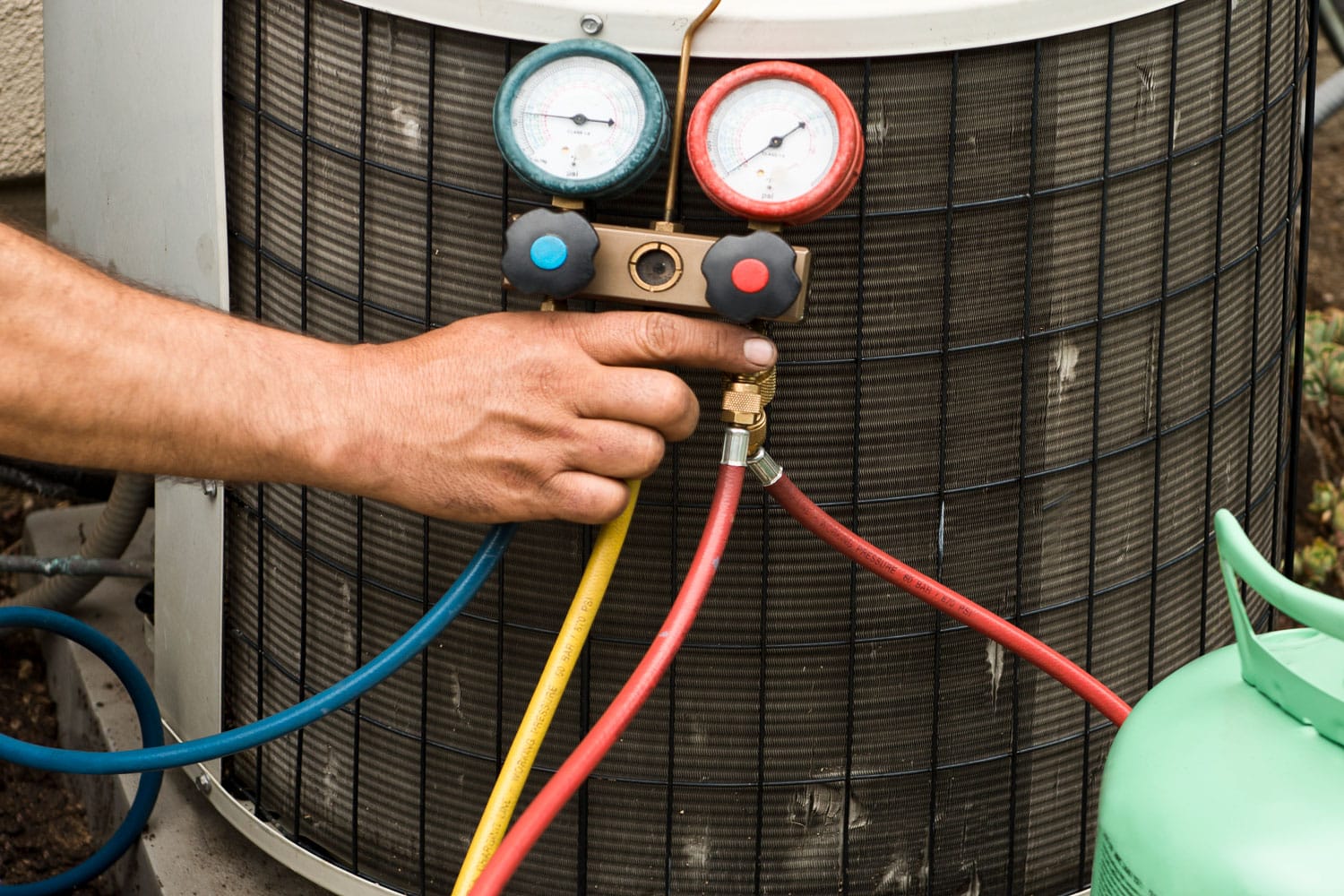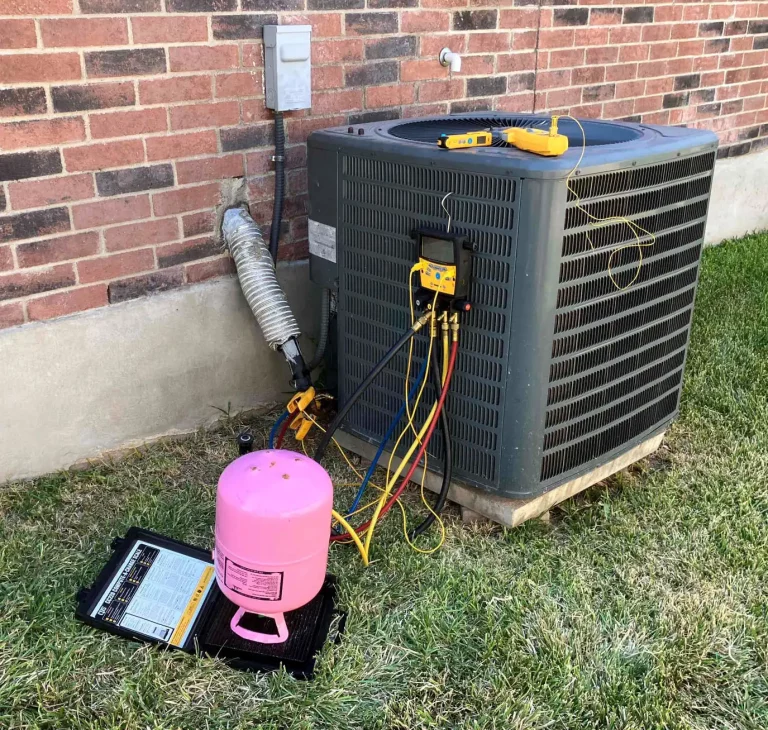
Alright, pull up a chair, grab a kopi susu, and let’s talk about something that can really make your blood boil, or rather, not cool down: your air conditioner and that mysterious thing called freon. Specifically, the cost of refilling it. Because, trust me, I’ve been there, sweating bullets, not just from the heat, but from the sheer panic of an unexpected bill.
You know that feeling, right? That blessed whoosh of cold air hitting you after a long, sweaty day, turning your living room into a little slice of heaven. It’s what makes life bearable, especially here where the sun feels like it’s personally trying to melt you. But then, one day, it just… wasn’t there. My trusty air conditioner, usually a silent hero, started blowing air that felt suspiciously like a warm, stale sigh. My heart sank faster than a brick in a swimming pool. The first thought that popped into my head, after "Oh no, not now!", was "Is it the freon? And how much is that AC freon refill cost going to set me back?" It’s a universal dread, isn’t it? That moment you realize your home’s precious cooling system might need some serious maintenance.
I remember staring at the unit, as if glaring at it would somehow magically make the cold air return. No dice. It was like my AC had decided to go on strike, demanding a raise in the form of a refrigerant top-up. The thought of living without proper air conditioning in this climate was enough to send shivers down my spine – ironic, considering I was already sweating. I started frantically Googling "why is my AC blowing warm air," "AC not cooling," and, of course, "average freon refill price." The results were a confusing mix of DIY videos that looked like a recipe for disaster, and technical jargon that made my head spin. It felt like trying to understand rocket science when all I wanted was to not feel like I was living inside an oven.
The Great AC Meltdown and My Moment of Truth
So, picture this: it was a particularly sweltering afternoon. My dog was sprawled out like a melted rug, and even the ice in my drink seemed to be giving up the ghost instantly. The warm air blowing from the vents was no longer just ‘not cool’, it was actively mocking me. That’s when I knew, deep down in my bones, I couldn’t put it off any longer. It was time to call in the cavalry. Or, more accurately, the AC technician.
I rang up a few places, trying to get a ballpark figure, but it was like pulling teeth. Everyone had to "come and assess first." Fair enough, I guess. You can’t just diagnose a car over the phone, right? But still, that uncertainty, that little knot of anxiety in your stomach about the unknown cost, it’s real. I picked one company based on a friend’s recommendation – someone who also had a dramatic AC saga of their own.
When the technician finally arrived, looking calm and collected despite my palpable desperation, he got straight to it. He checked the outdoor unit, fiddled with some gauges, and then came the dreaded words: "Looks like you’ve got a leak, ma’am. And you’re pretty low on refrigerant." My heart sank again. A leak! That wasn’t just a simple top-up, was it? That sounded like surgery. He explained that ACs don’t "use up" freon like a car uses gas. If it’s low, it means it’s escaping somewhere. It’s like having a leaky bucket; you can keep pouring water in, but it won’t stay full until you fix the hole.
Understanding Why Your AC Needs a Freon Refill (It’s Not What You Think)
This was a big revelation for me, and probably for many of you too. I always thought freon was like ink in a printer – you use it, and then you replace it. Nope. Turns out, your AC system is a closed loop. The refrigerant (what most people call freon) just cycles through, changing states to absorb and release heat. So, if your AC performance is dropping and it’s low on freon, it means there’s a breach in the system. And that, my friends, is the real villain of the story.
The technician, bless his patient soul, took the time to explain the different types of refrigerants. This is where it gets a bit technical, but bear with me because it directly impacts the freon refill cost.
- R-22 (a.k.a. Freon): This is the old-school stuff. Most AC units installed before 2010 or so probably use this. The catch? It’s being phased out globally due to its ozone-depleting properties. What does that mean for you? It’s becoming incredibly scarce and, consequently, very expensive. If your old unit needs R-22, be prepared for a sticker shock. It’s like trying to find spare parts for a vintage car – rare and pricey.
- R-410A (a.k.a. Puron or various other brand names): This is the new kid on the block, environmentally friendlier, and used in most modern AC systems. It’s generally much cheaper than R-22, simply because it’s readily available.
My unit, being a bit older, needed R-22. Gulp. He then explained that finding and fixing the leak was the critical first step. You can’t just top it up; it’ll just leak out again. This added another layer to the potential bill. It wasn’t just the cost of the gas, but the detective work too.
The Price Tag: What Exactly Drives the AC Freon Refill Cost?
So, what went into that final bill? It wasn’t just a flat rate. The technician broke it down, and it finally made sense why the initial phone calls were so vague.
- The Type of Refrigerant (as discussed above): This is probably the biggest variable. R-22 is like liquid gold now. R-410A is more like… well, regular gold, still valuable but not as rare.
- The Amount of Refrigerant Needed: Did your system just need a little top-up, or was it practically empty? A full refill after a major leak repair will obviously cost more than just a small boost. My system was pretty empty, adding to the pain.
- Leak Detection and Repair: Ah, the hidden cost! This is often the most expensive part of the whole ordeal. Technicians use various methods:
- Bubble Test: Spraying soapy water on suspected leaky areas to see if bubbles form. Simple, but only good for visible leaks.
- Electronic Leak Detectors: Handheld devices that sniff out refrigerant gases.
- UV Dye: Injecting a special dye into the system. The dye glows under UV light, making the leak visible. This is what my guy used, and it worked like magic – a tiny, glowing green spot appeared on a pipe connection.
Once the leak is found, it needs to be repaired. This could be as simple as tightening a flare nut, or as complex as replacing a section of copper piping or even an evaporator coil (which can be a huge, expensive job on its own). My leak was relatively minor, thankfully, just a connection that needed re-soldering.
- Technician’s Labor and Service Call Fee: You’re paying for their expertise, their tools, and their time. Most companies have a base service call fee just to show up, which often includes a diagnostic. Then, there’s an hourly rate for the actual repair and refill process.
- Your Location: Just like everything else, prices vary wildly by region. What you pay in a big city might be different from a smaller town.
- Emergency vs. Scheduled Service: If you need someone out right now because you’re melting, expect to pay a premium for emergency service. If you can wait a day or two, you might save a bit.
For my R-22 leak detection, repair, and refill, the final bill was… well, let’s just say it was enough to make me consider taking cold showers for a week. But the relief of having a properly functioning AC again was immense. It felt like winning a small lottery, even though I was the one paying out. A strange, conflicted kind of relief.
DIY vs. Professional: Don’t Be a Hero (Seriously)
I know, I know. When you see those big numbers, the thought of trying to fix it yourself inevitably crosses your mind. There are kits out there, cans of "freon" you can buy. My advice? Don’t. Just don’t.
- Safety First: Refrigerants are chemicals. They can cause chemical burns, and if mishandled, can even lead to explosions. Plus, if you’re working with electricity, you’re risking electrocution. Is a few hundred dollars worth your life or a trip to the ER?
- Environmental Impact: Releasing refrigerants into the atmosphere is bad news for the ozone layer and contributes to global warming. Professionals are trained to handle these substances responsibly and recover them properly.
- It’s Illegal (Often): In many places, it’s actually illegal for untrained individuals to handle or purchase certain refrigerants.
- You’re Not Fixing the Problem: Remember, if your AC is low on freon, there’s a leak. Just topping it up without finding and fixing the leak is like putting a band-aid on a gushing wound. You’re wasting money and not solving anything. Plus, you might overcharge or undercharge the system, which can cause even more damage.
- Voiding Your Warranty: Messing with your AC yourself will almost certainly void any existing warranty.
So, while the temptation is real, especially when you’re looking at a potentially hefty AC repair cost, trust me, this is one area where calling a qualified, licensed professional is worth every penny. Think of it as an investment in your comfort and your sanity.
A Stitch in Time: The Power of Preventative AC Maintenance
My freon refill saga taught me a very valuable, albeit expensive, lesson: preventative maintenance is not just a suggestion, it’s a necessity. It’s like getting regular check-ups for your own health. You don’t wait until you’re collapsing to see a doctor, right?
Here’s what I learned and what I now do:
- Annual Check-up: Have a professional come out at least once a year, ideally before the peak hot season. They’ll check the refrigerant levels (without just topping up!), clean coils, inspect electrical components, and check for any potential issues before they become major headaches. This can often catch small leaks early.
- Clean Your Filters: This is the easiest and cheapest thing you can do yourself. Dirty filters restrict airflow, making your AC work harder, which can lead to other problems down the line. Change or clean them monthly during heavy use.
- Keep Outdoor Unit Clear: Make sure the outdoor unit (condenser) is free of debris, leaves, and overgrown plants. It needs good airflow to dissipate heat efficiently. Give it a gentle spray with a hose to clean the coils (make sure the power is off first!).
- Listen to Your AC: Strange noises, weird smells, or a sudden drop in cooling efficiency are all signs that something is wrong. Don’t ignore them. The sooner you address a problem, the less expensive it’s likely to be.
My experience with the air conditioner freon refill cost was a wake-up call. It was stressful, a bit confusing, and definitely hit the wallet. But it also made me appreciate the unsung hero that keeps my home cool, and taught me the importance of taking care of it. So, next time your AC starts blowing warm air, take a deep breath, try not to panic, and remember: it’s an investment in your comfort. And maybe, just maybe, with a little regular TLC, you can avoid your own dramatic freon refill adventure. Unless, of course, you like sweating and surprise bills. I certainly don’t!
